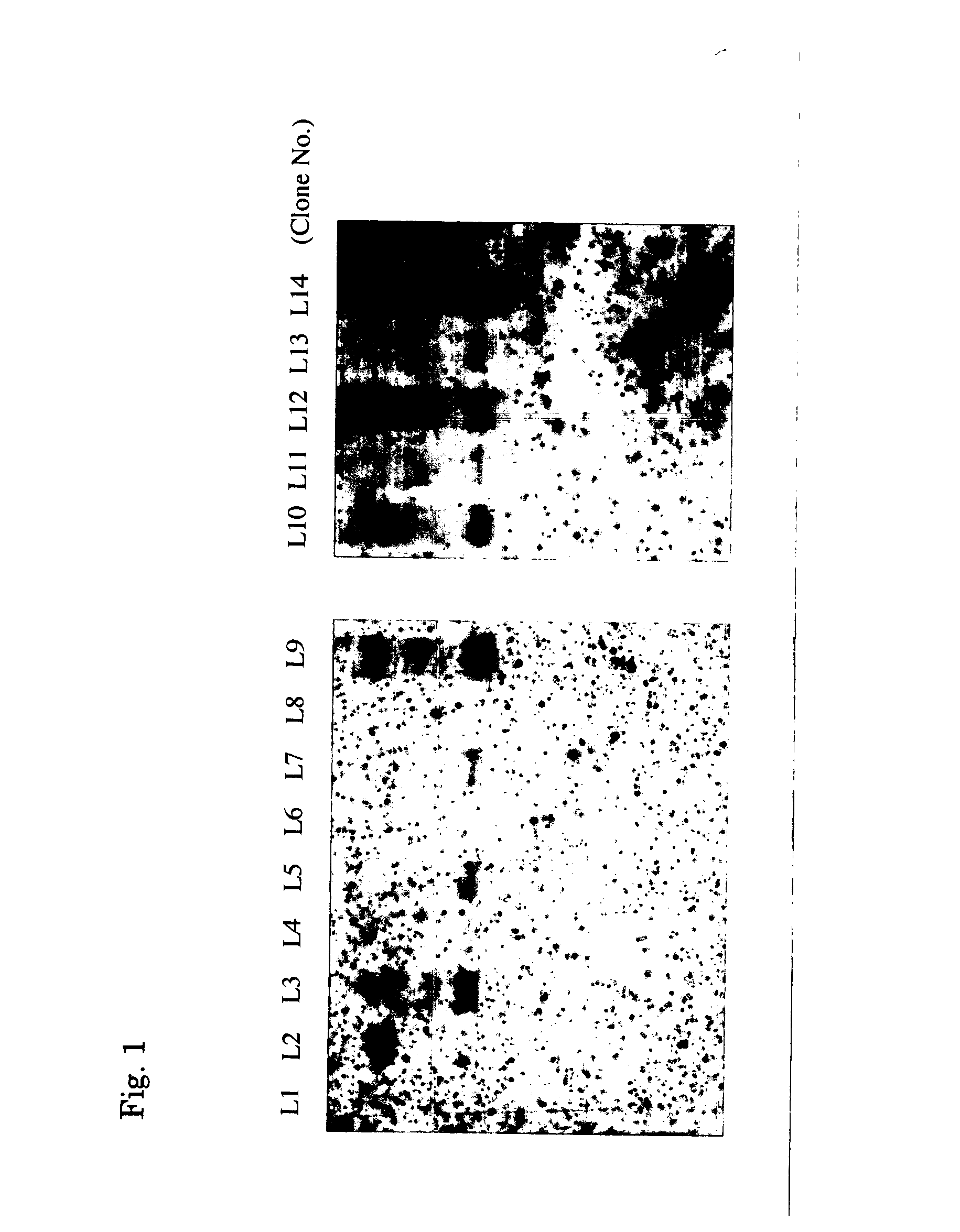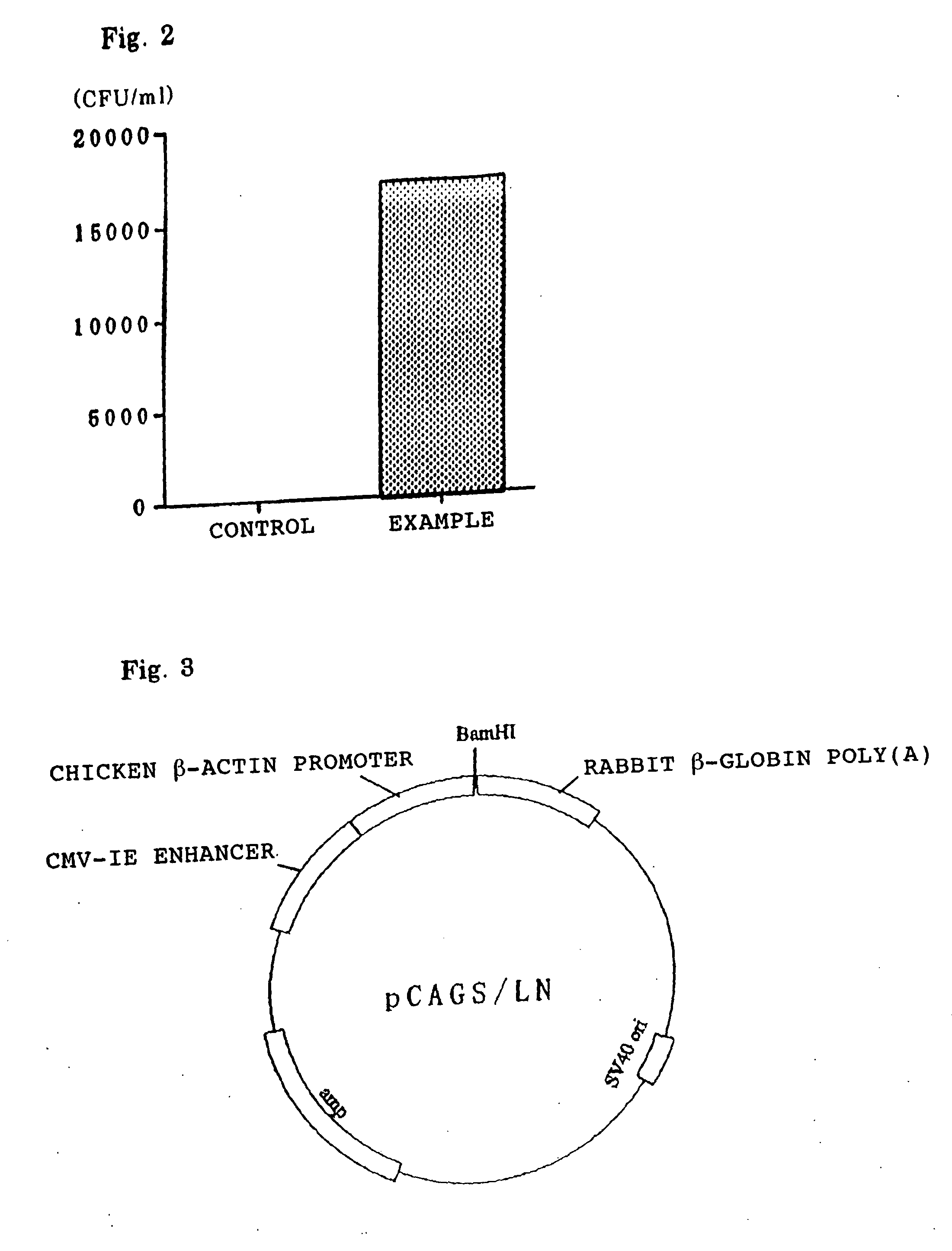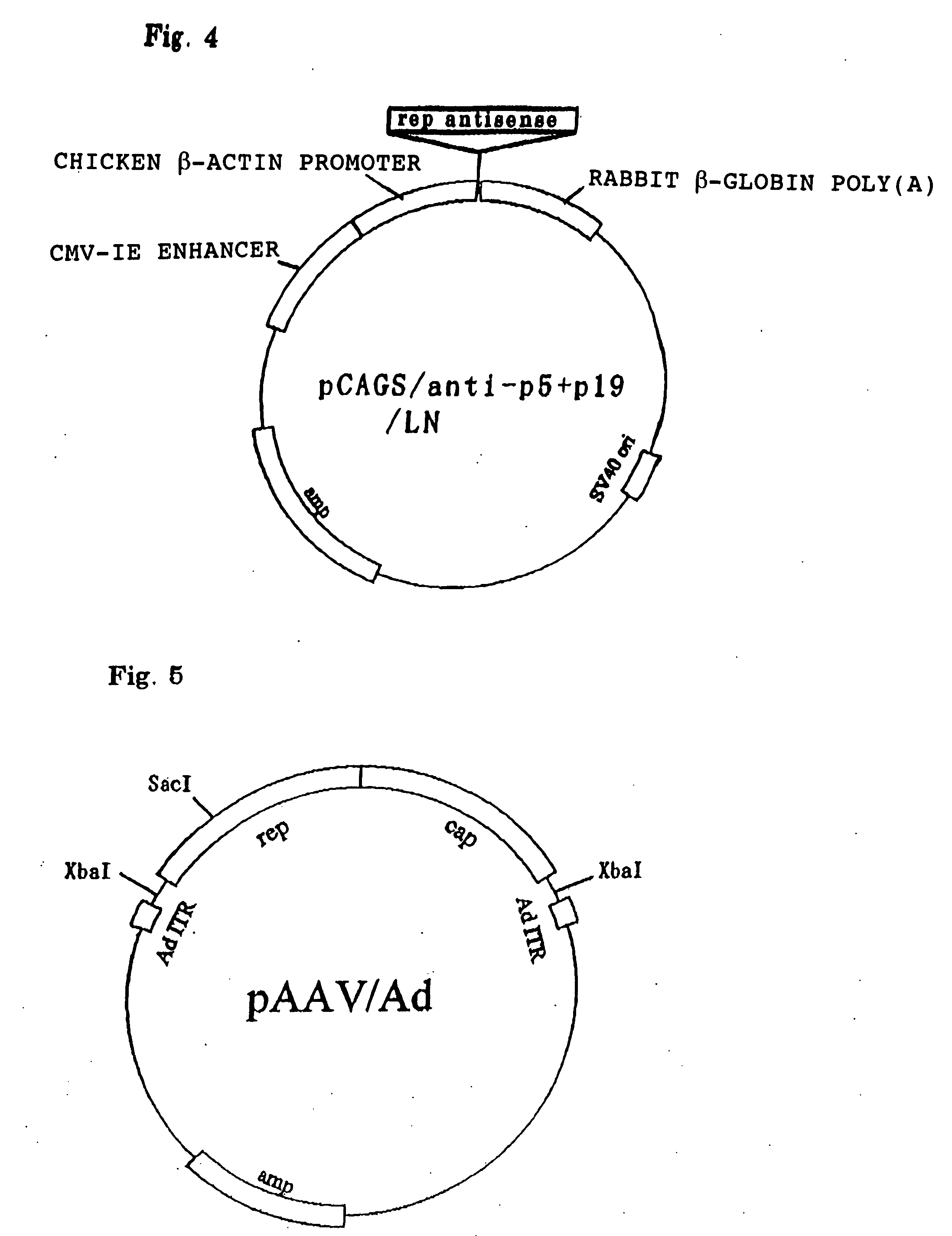Cells to be used in producing virus vector, process for producing the same, and process for producing virus vector with the use of the cells
a cell and virus technology, applied in the field of cell lines, can solve the problems of difficult to obtain a high-titer virus vector, limited efficiency of plasmid transduction into cells, and varies in transduction efficiency, so as to achieve high-titer virus vectors and efficient production of virus vectors. the effect of simple operation
- Summary
- Abstract
- Description
- Claims
- Application Information
AI Technical Summary
Benefits of technology
Problems solved by technology
Method used
Image
Examples
example 1
[0054] Construction of pCAGS-r / anti-p5+p19 / LN Plasmid
[0055] A primer was designed in which BglII site was so designed that it contains a transcription initiation site of the p5 promoter of the rep gene (repS; 5'; -GAAGATCTTCCATTTTGAAGCGGGAGTTTGAACG-3'; (SEQ ID NO: 2); the underlining denotes the BglII site), and a primer was designed in which the BglII site was designed about 200 bp downstream of a transcription initiation site of the p19 promoter (repA; 5'; -GAAGATCTGAATTCGCCGCATTGAAGGAGATGTATGAGG-3'; (SEQ ID NO: 3); the underlining denotes the BglII site).
[0056] Part of the coding region of the rep gene was amplified by PCR (polymerase chain reaction) using as a template a pAAV / Ad plasmid containing the entire structural gene of AAV (Samulski, R. J., et al., J. Virol., 63, 3822-3828, 1989; FIG. 5; obtained from Samulski). The PCR conditions were: reaction at 94.degree. C. for 5 minutes, then 30 cycles of 94.degree. C. for 30 seconds, 61.degree. C. for 30 seconds, and 72.degree. C....
example 2
[0064] Construction of pAdex1w / AAV Plasmid An approximately 4.3 kb XbaI fragment containing the rep gene and the cap gene of AAV was collected from pAAV / Ad (FIG. 5). This XbaI fragment was then subcloned at the SwaI site of the cosmid pAdex1w (Miyake, S. et al., Proc. Natl. Acad. Sci. USA., 93, 1320-1324, 1996; FIG. 6; obtained from Saito) to thus construct a pAdex1w / AAV cosmid (FIG. 7). Collection and subcloning of the gene fragment were carried out in the same manner as in Example 1.
[0065] In the figure, `adenovirus ITR (AdITR)` denotes an ITR (Inverted Terminal Repeat) derived from an adenovirus type 5.
[0066] `rep` denotes an AAV type 2-derived rep gene.
[0067] `cap` denotes an AAV type 2-derived cap gene.
[0068] `COS` denotes a packaging recognition sequence derived from .lambda. phage.
[0069] `pBR322 ori` denotes a plasmid replication initiation site within pBR322-derived E. coli.
example 3
[0070] Establishment of Rep Antisense Expressing Cell Line
[0071] 293 cells were used for establishing a rep antisense expressing cell line. The 293 cells were maintained in Dulbecco's modified Eagle's medium (DMEM; manufactured by Gibco Industries, Inc.) supplemented with 10% fetal bovine serum (Gibco Industries, Inc.) and an antibiotic. These cells were cultured to an approximately 70% confluent state in a 10 cm dish and transfected with the constructed pCAGS-r / anti-p5+p19 / LN plasmid (FIG. 4) by the known calcium phosphate method (M. Kringler, Gene Transfer and Expression Protocol., A Laboratory Manua, Oxford University Press, 1990). The 293 cells thus transfected were incubated in a CO.sub.2 incubator (culture conditions: cells were cultured using Dulbecco's modified Eagle's medium (DMEM; manufactured by Gibco Industries, Inc.) containing 10% fetal bovine serum (FBS, manufactured by Gibco Industries, Inc.) at 37.degree. C. and 5% oxygen concentration) for 4 hours, and then incubat...
PUM
| Property | Measurement | Unit |
|---|---|---|
| Cytotoxicity | aaaaa | aaaaa |
Abstract
Description
Claims
Application Information
 Login to View More
Login to View More - R&D
- Intellectual Property
- Life Sciences
- Materials
- Tech Scout
- Unparalleled Data Quality
- Higher Quality Content
- 60% Fewer Hallucinations
Browse by: Latest US Patents, China's latest patents, Technical Efficacy Thesaurus, Application Domain, Technology Topic, Popular Technical Reports.
© 2025 PatSnap. All rights reserved.Legal|Privacy policy|Modern Slavery Act Transparency Statement|Sitemap|About US| Contact US: help@patsnap.com



